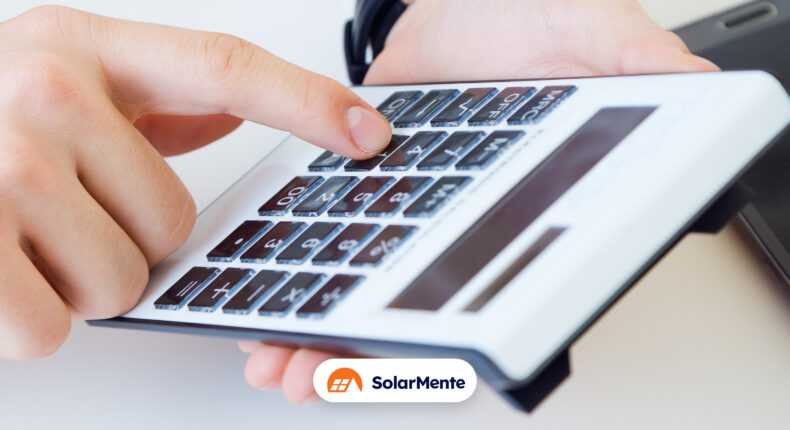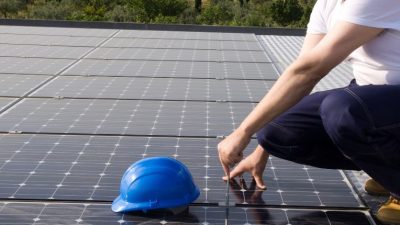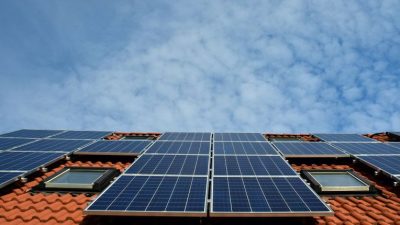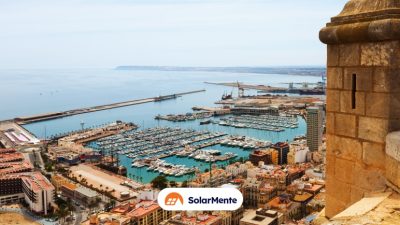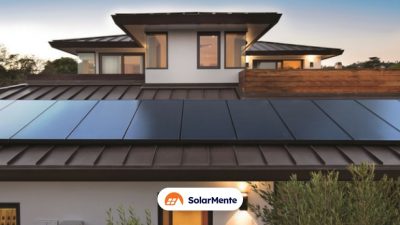The volatility of electricity prices together with the subsidies offered by the State and the Autonomous Communities in favour of solar energy and other renewable sources, has led to the interest of many Spanish households and companies in self-consumption.
One of the decisive factors when opting for this technology is the price of the solar panels, which will influence the performance of the system. There are various circumstances that affect this value, both economic and social.
In this article we will talk about the prices of solar panels for a house and what 2023 looks like.
In addition, the following topics will be discussed in more detail:
-
What variables affect prices
-
The influence of the current economic situation on prices
-
The costs of residential installations
Key factors in solar panel prices
Not only the material is a determining factor, but also the technology, the manufacturers, the size of the installation and the purpose also influence the price.
Knowing all these elements helps to make the best possible decisions with the sole purpose of obtaining a profitable photovoltaic system.
However, external factors come into play that we cannot control: economics.
Manufacturing technology
Solar panels use different methodologies and this determines the manufacturing cost, which is reflected in the total cost of these components.
Currently, the most commonly used modules are polycrystalline and monocrystalline. The former are predominantly used in the industrial sector, while the latter are more commonly used in households.
Polycrystalline panels are made of several crystals by rapid solidification in square moulds. This means a lower price.
Monocrystalline panels, on the other hand, are made up of a single crystal with cut silicon sheets that ensure a higher yield. As a result, a higher amount of energy production is obtained to be consumed in the house.
Approximate prices for monocrystalline panels range from approximately €100 to €200. As we always say, it is important to take the data with a pinch of salt. Depending on the manufacturer and power these amounts may vary.
In contrast, a polycrystalline solar panel uses a less efficient technology and this results in a lower price. For this reason, they are more commonly used in solar farms and industries.
Brand or manufacturer of the solar panel
Each company in the photovoltaic sector uses a different technology. They study more precisely how to increase the efficiency of the modules through continuous investment in research and development.
It is important to know the trajectory of these brands and their solvency in the market, as well as studying the quality of the materials together with the guarantees they provide. In this sense, it is better to go for manufacturers with a long track record that confirm efficient technology.
In this article we tell you all about the best manufacturers of solar panels on the market and who we bet on to offer you maximum performance.
Size
The intended use of the solar panels also influences the price. For this reason, manufacturers create systems of various sizes.
The most common in residential areas are systems consisting of 60 or 72 cells. However, new installations have emerged that include up to 144 cells.
What is the reason for this expansion?
Unfortunately, some homes are affected by shading more than they would like to be. To minimise this, split cells are used to avoid high resistance losses.
They work like two split panels, but in reality it is only one. In this way, the output of only one part is reduced without affecting the other area of the module.
How do economics affect the prices of PV panels?
In addition to all the factors mentioned above, there are other elements that we cannot control and that determine, in part, the rise or fall of prices.
According to UNEF data,photovoltaic solar energy accounted for 20% of renewable generation in Spain in 2021. This figure shows the growing demand for solar panels in Spain.
All this growth, together with the impact of the pandemic in 2020 and 2021, has led to a shortage of materials.
This socio-economic context caused an increase in the prices of the photovoltaic industry, where the price of polysilicon increased significantly, as well as other relevant materials in manufacturing.
Other factors involved in the price increase were transport, semiconductor shortages and labour shortages.
Given that China remains the world’s largest producer, it is logical to find higher prices.
Raw materials
Solar, wind and electric cars require more minerals than fossil fuels.
Those minerals that are essential for clean energy, such as polysilicon, copper, aluminium and zinc, among others, are processed and extracted in just a few countries, where China is the undisputed leader.
Let us analyse the evolution of the prices of the raw materials involved in the manufacture of solar panels.
Polysilicon, the main material for the manufacture of panels, maintained high prices during 2022 due to a strong growth in demand and the stoppage of plant activity during the pandemic. Moreover, it reached USD 39.3/kg, the highest price since 2011.
On the other hand, the price of aluminium continues to rise and, according to Goldman Sachs, will not stabilise until 2025.
Silver will also remain at higher prices despite a 1% decline in 2022 compared to the previous year.
As for copper, the price is expected to rise slightly from $3.78 to $4.42 per pound.
Transport and labour shortages
Raw material shortages are just one piece of the puzzle, but let’s not forget shipping delays and labour shortages, hampering the supply chain.
As mentioned above, the Asian country remains the main manufacturer of solar panels and therefore handles distribution around the world.
This generates a dependency and a supply problem in certain situations. This was the case with the pandemic, where global transport was reduced, resulting in higher panel costs.
According to GlobalData, prices are expected to decrease in 2023 and continue on a downward trend until 2030 thanks to technological advances and the increasing scale of production.
However, solar energy is still the cheapest source. Costs have fallen by 90% in the last decade.
How much does it cost to install solar panels on a house? Beyond the modules themselves
Once we are clear on the components that impact the price of solar panels, it is time to know what an installation costs in addition to the modules themselves.
What other elements are involved in the final price?
The inverter, the structure, the wiring and the other devices that ensure the operation of the installation.
In addition, the cost includes the labour and administrative procedures necessary to legalise the photovoltaic system. Bear in mind that this procedure can only be carried out by an approved company.
Don’t worry about the necessary permits for your solar panels, at SolarMente we manage the whole process from start to finish. We offer a personalised service that resolves all your doubts before or after the installation, as well as any possible incidents that may arise during the procedure.
Now yes, these are the approximate prices we work with in our solar panels installations:
| Solar panels | Price |
| Kit M | 6.786 € |
| Kit L | 8.114 € |
| Kit XL | 9.538 € |
In large systems, the price is higher due to the composition of a larger number of modules and other materials such as cables or structures.
Likewise, the type of inverter also influences the price of the installation, as well as the manpower, the number of hours of which will increase for correct operation.
In any case, you have two alternatives for opting for self-consumption depending on the investment to be made:
If you cannot make a large investment, but you want to enjoy solar energy in your home, you can pay a reduced monthly fee for your installed system.
Conclusions on solar panel prices
Despite the recent increase in the cost of raw materials, self-consumption is still the cheapest source of energy to reduce your electricity bill.
As you have seen, there are several factors that make the price of solar panels fluctuate, depending on the size, the technology used and the manufacturer, we can talk about different prices.
And, of course, the economic situation is an influencing factor that we cannot control.
However, the regulations established in recent years and the incentives for self-consumption allow us to continue betting on solar energy, both in the purchase and rental of solar panels.
If you want to find out the price of your installation, try our self-consumption calculator and find out first how much your electricity bill will be reduced.

